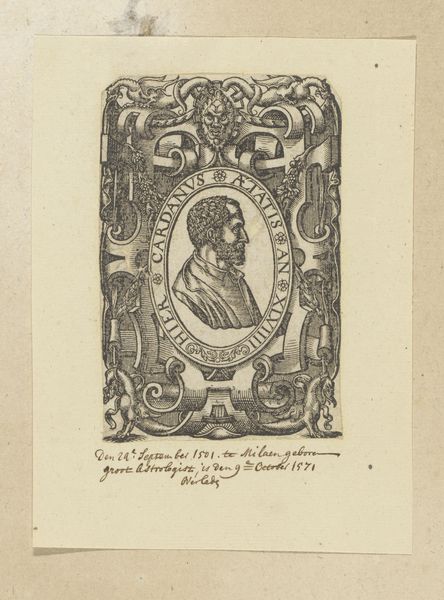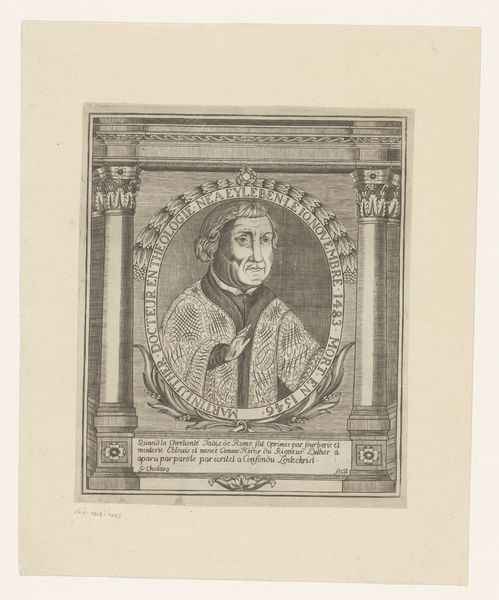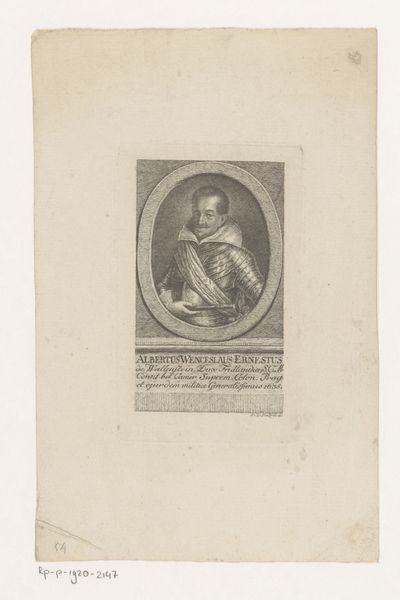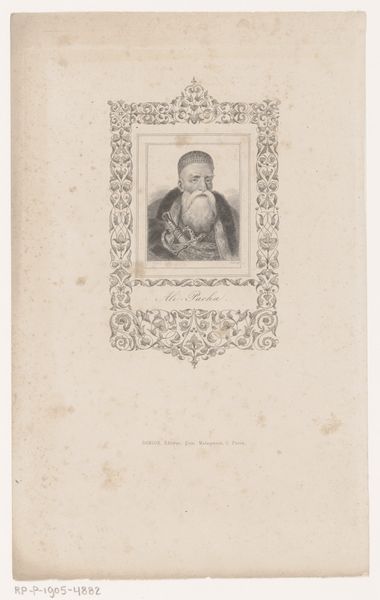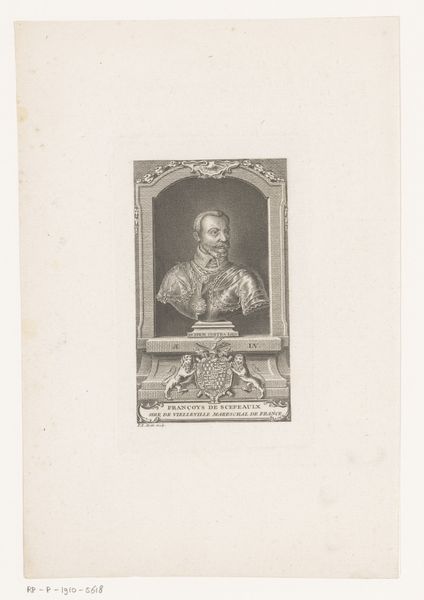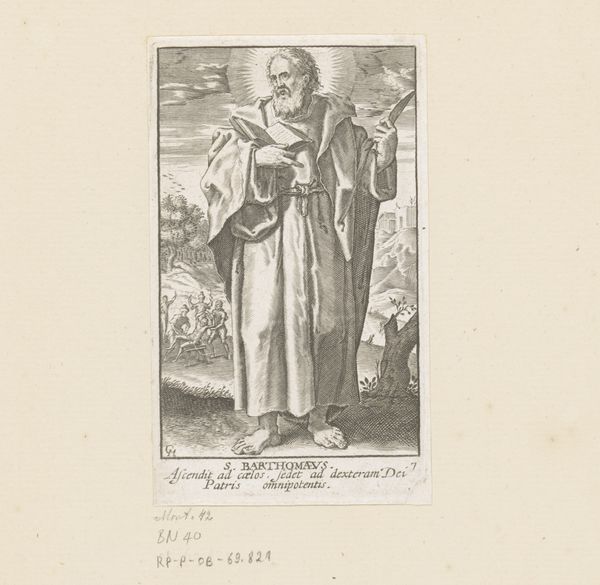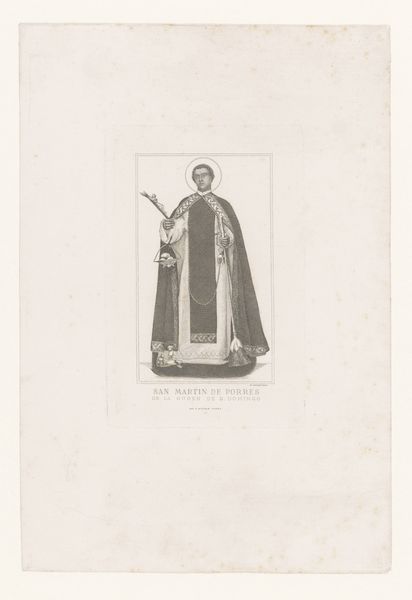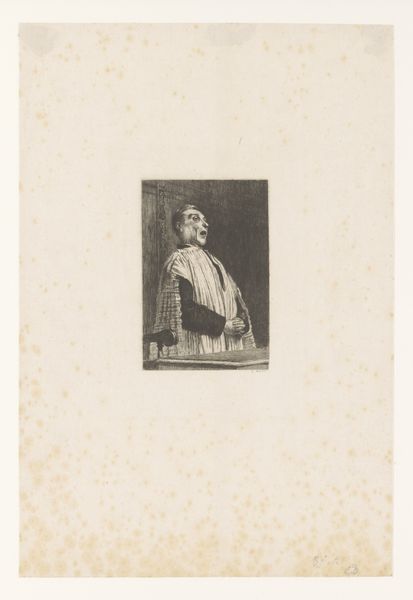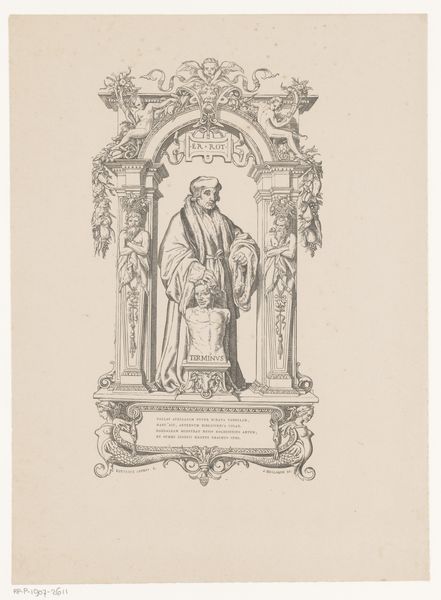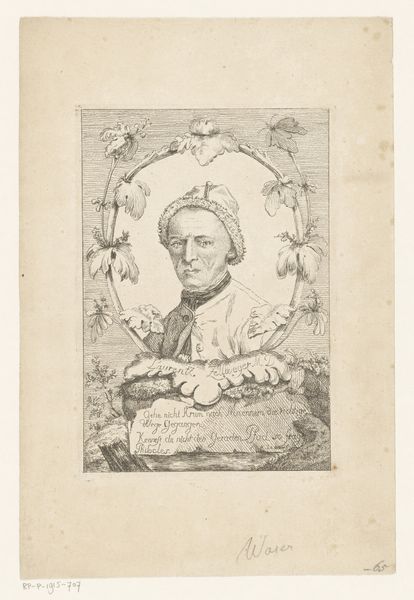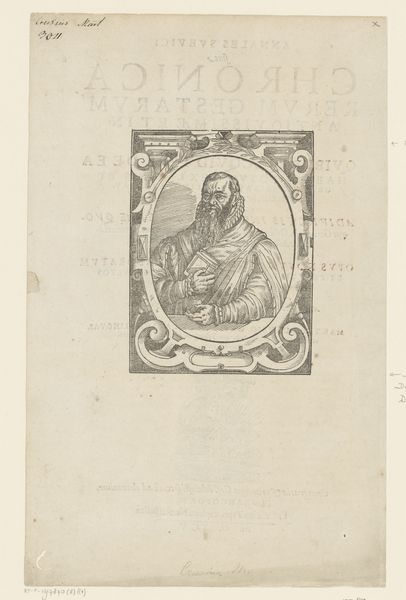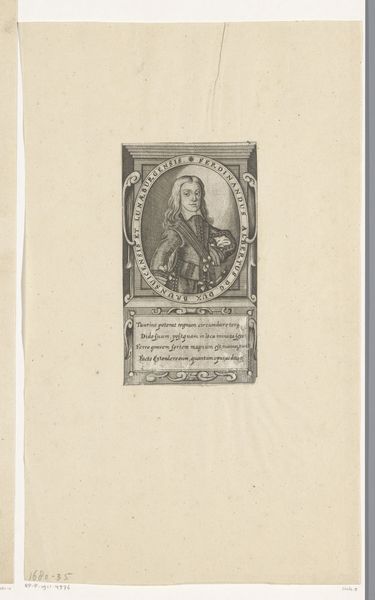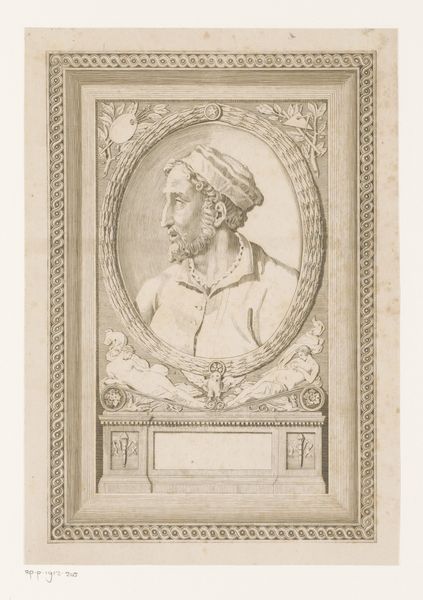
drawing, paper, ink
#
portrait
#
drawing
#
medieval
#
book
#
old engraving style
#
paper
#
ink
#
history-painting
Dimensions: height 419 mm, width 214 mm
Copyright: Rijks Museum: Open Domain
Editor: So, this is "Portret van Martin Luther," a drawing from 1817 by Theodor Götz, done with ink on paper. It's quite detailed and striking, but what I find really intriguing is the sheer amount of text surrounding the central figure. What do you see in this piece? Curator: Indeed. It's fascinating how the image is presented almost as a devotional icon. Consider the vine border, echoing the Eucharist. The text, framing Luther, transforms him into a living embodiment of scripture, a figure through which the Word is revealed. Look closer: what does his pose, holding the book, evoke for you? Editor: It makes me think about access to knowledge, to the Bible. Before the Reformation, religious texts were often only available in Latin. Curator: Precisely. This drawing isn't just a portrait, it's a visual argument. It's about Luther’s translation and making scripture accessible, empowering individuals. Even the severe, almost hieratic, style evokes the weight of tradition while simultaneously proclaiming a break from it. Notice how his robes seem to blend with the surrounding text; does that imply something about Luther’s personal connection to scripture? Editor: Maybe that the words have become one with the man? It’s as if his being is inseparable from the Bible and his translation. It's more than just an image; it's a symbol of reform. Curator: Absolutely. It is about continuity and change, isn't it? The drawing shows Luther in the context of earlier traditions, while placing him on the cusp of immense religious upheaval, too. The use of text is something more than mere description. Do you notice that the symbols make the picture both old and very forward-thinking? Editor: Now that I think of it, the composition reminds me of illuminated manuscripts. Curator: Well, looking at it this way has totally changed how I think about Luther’s image and its relation to reformist communication! Editor: Agreed. It’s more complex than I initially assumed, understanding that balance of tradition with Luther's revolutionary role.
Comments
No comments
Be the first to comment and join the conversation on the ultimate creative platform.

